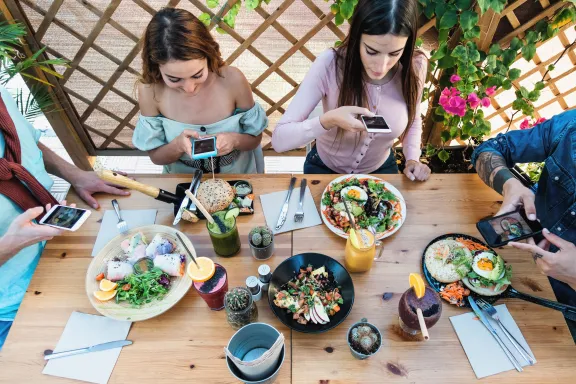OPINION: Why Gen Z Has a Different Attitude About Dining Than Boomers and Millennials — And It’s Impacting Chain Restaurants
In the ever-evolving landscape of American dining, one clear trend is emerging: Gen Z is redefining how, when, and why people eat out. This generational shift in dining habits is making waves across the food industry, with chain restaurants especially feeling the impact. Compared to their Millennial and Baby Boomer counterparts, Gen Z diners are spending less per visit, prioritizing different experiences, and making food choices that reflect their values rather than tradition.
For decades, Baby Boomers and Millennials helped sustain the success of casual dining chains like Applebee’s, Chili’s, and Olive Garden. These generations viewed dining out as both a social activity and a status symbol, often choosing full meals and drinks in sit-down settings. But Gen Z—born between the mid-1990s and early 2010s—is rewriting that script.
According to recent data from market research firm Circana, Gen Z restaurant guests typically have smaller check sizes compared to older generations. They’re more likely to skip appetizers and drinks, less inclined to dine in groups, and increasingly turn to fast-casual or grab-and-go options. The result: lower average spending per meal and fewer visits to traditional chain restaurants.
Value Over Volume
One of the biggest drivers of Gen Z’s distinct dining behavior is their heightened sensitivity to price. This generation has come of age during a period of economic uncertainty—marked by the COVID-19 pandemic, inflation, and concerns over student debt and job security. As a result, Gen Z is particularly value-conscious.
“They’re not necessarily cheap, but they want to know that they’re getting what they pay for,” said Amanda Smith, a food industry analyst at Technomic. “If a $15 entree at a chain doesn’t feel worth it, they’ll go for a $9 bowl from a fast-casual spot like Chipotle or Sweetgreen instead.”
Health, Ethics, and Authenticity
Beyond cost, Gen Z places a strong emphasis on health, sustainability, and authenticity. This means traditional comfort food fare—once a reliable draw for Millennials and Boomers—is losing appeal among younger diners. Instead, Gen Z is seeking out options that align with their personal values, including plant-based meals, ethically sourced ingredients, and global flavors.
Chains that have recognized this shift and adapted are faring better. Brands like Cava, Shake Shack, and Panera Bread have thrived by offering customizable, “clean” menus with transparent ingredient lists. Meanwhile, legacy chains have struggled to capture Gen Z’s attention despite efforts to modernize.
Digital-First Dining
Technology also plays a key role in Gen Z’s dining decisions. As digital natives, they rely heavily on mobile ordering, delivery apps, and online reviews. Convenience is paramount. Many prefer ordering ahead and eating on the go rather than sitting down for a traditional restaurant experience. This digital-first mindset has bolstered the popularity of ghost kitchens and fast-casual concepts that optimize speed and convenience.
“Gen Z doesn’t need a server or a booth to feel like they had a good meal,” said Jason Reynolds, a restaurant consultant based in New York. “They want it fast, on their terms, and ideally with a cool story behind it.”
Experience Over Extravagance
Interestingly, when Gen Z does choose to splurge, they’re often doing it for an experience rather than a meal. Pop-up restaurants, local food trucks, and niche eateries that offer Instagrammable environments are attracting younger crowds. Aesthetics, social shareability, and uniqueness often outweigh portion size or name recognition.
As chain restaurants grapple with these shifting expectations, some are reevaluating their models. Loyalty programs, flexible menu options, and tech integration are becoming essential to staying relevant.
Still, the message from Gen Z is clear: dining out is no longer just about food. It’s about identity, ethics, value, and experience. And unless chain restaurants can tap into that mindset, they may continue to see smaller tickets—and smaller crowds—from this influential generation.
